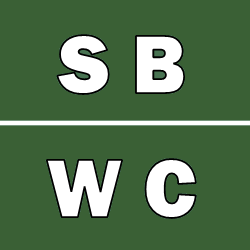All projects need to start with square boards to make for an enjoyable building experience. Here we will talk through:
- How is a Board Square?
- How to Check a Board for Square
- Cutting Square Boards with Hand Tools
- Cutting Square Boards with Power Tools
How is a Board Square?
In woodworking and construction, when we say a board is "square," it means that the angles between its adjacent sides are exactly 90 degrees, forming right angles. In other words, all four corners of the board are equal, and the opposite sides are parallel.
A square board is crucial for accurate and stable construction because it ensures that the corners meet at right angles, providing a solid foundation for the structure. If a board is not square, it can lead to issues such as uneven joints, misaligned edges, and instability in the final construction.
How to Check a Board is Square
Ensuring that a board is square is crucial for accurate and stable construction. Here are steps you can take to make sure a board is square:
Measure Diagonals:
Measure the diagonals of the board from opposite corners. If the board is square, the diagonal measurements should be equal.
Three-Four-Five Triangle Method:
Create a right-angled triangle using the 3-4-5 rule. Measure 3 units along one edge, 4 units along the other edge, and if the diagonal is exactly 5 units, the board is square.
Use a Square:
Place a square at the corners of the board. Ensure that the square sits flush against both edges. If there are gaps, the board may not be square.
Cutting Square Boards with Hand Tools
Step 1: The First Side
With hand tools, the orientation of the grain is more important as you work with it by hand. Your first flat side should be a side running with the grain, not end grain.
If your board already has a flat side, this step can be skipped, but If your board has no flat sides, the first step is to create one.
Depending on how much material needs to be removed, either saw a line close to your desired finish line then plane the board down to flat or jump straight to the plane.
It is important to make sure your board is square to the faces. Double check with a square as you work along the board.
Step 2: The Parallel Side
Once one side is flat, mark your desired depth across the other side of the board and cut and plane that side down to the line, making sure it is also square to the faces of the board.
Step 3- Squaring the Ends
End grain can be more difficult to work with, take your time and use sharp tools for this step.
Saw one side close to the desired end of the board, then use a shooting board to get a square edge to the first and parallel side that is also square with the faces of the board.
For the send end, mark the desired length of the board, then cut close to that line and use the shooting board to get the final length desired.
Cutting Square Boards with Power Tools
Step 1: The First Side
If your board already has a flat side, this step can be skipped, but If your board has no flat sides, the first step is to create one. This can be done two ways depending on what tools you have.
Option 1: Use a Jointer - Run one side of the board through the jointer until you get a flat surface square with the face of the board.
Option 2: Use a Table Saw - Using a sled, secure the piece and cut off one straight side square with the face of the board. There are several different types of sleds you can use, the only important factor in choosing one is that the piece has to be able to be secured to get a straight cut all the way through it.
Step 2: The Parallel Side
With one straight side, the next step is to cut the opposite side parallel to the first side at the appropriate width. The best tool for this is the table saw. Set the fence to the appropriate distance from the blade and run your board all the way through it creating an even distance between the two sides of the board.
Step 3 - Squaring the Ends.
With your board having two parallel sides, you have two options for squaring the sides.
Option 1: Use a Miter Saw - Make sure your Miter saw is set up for 90 degree cuts, then cut one side of the board. Then measure and cut the other side to make sure the board ends up the appropriate length.
Option 2: Use a Table Saw - Using a sled or miter gauge, cut one side of the board and double check it is cutting at 90 degrees from your previous parallel sides with a square. Then measure and cut the other side to make sure the board ends up the appropriate length.
Always follow the manufacturer's instructions for your power tools and take appropriate safety precautions. If you're not comfortable using power tools, consider seeking assistance from a more experienced individual or a professional.

